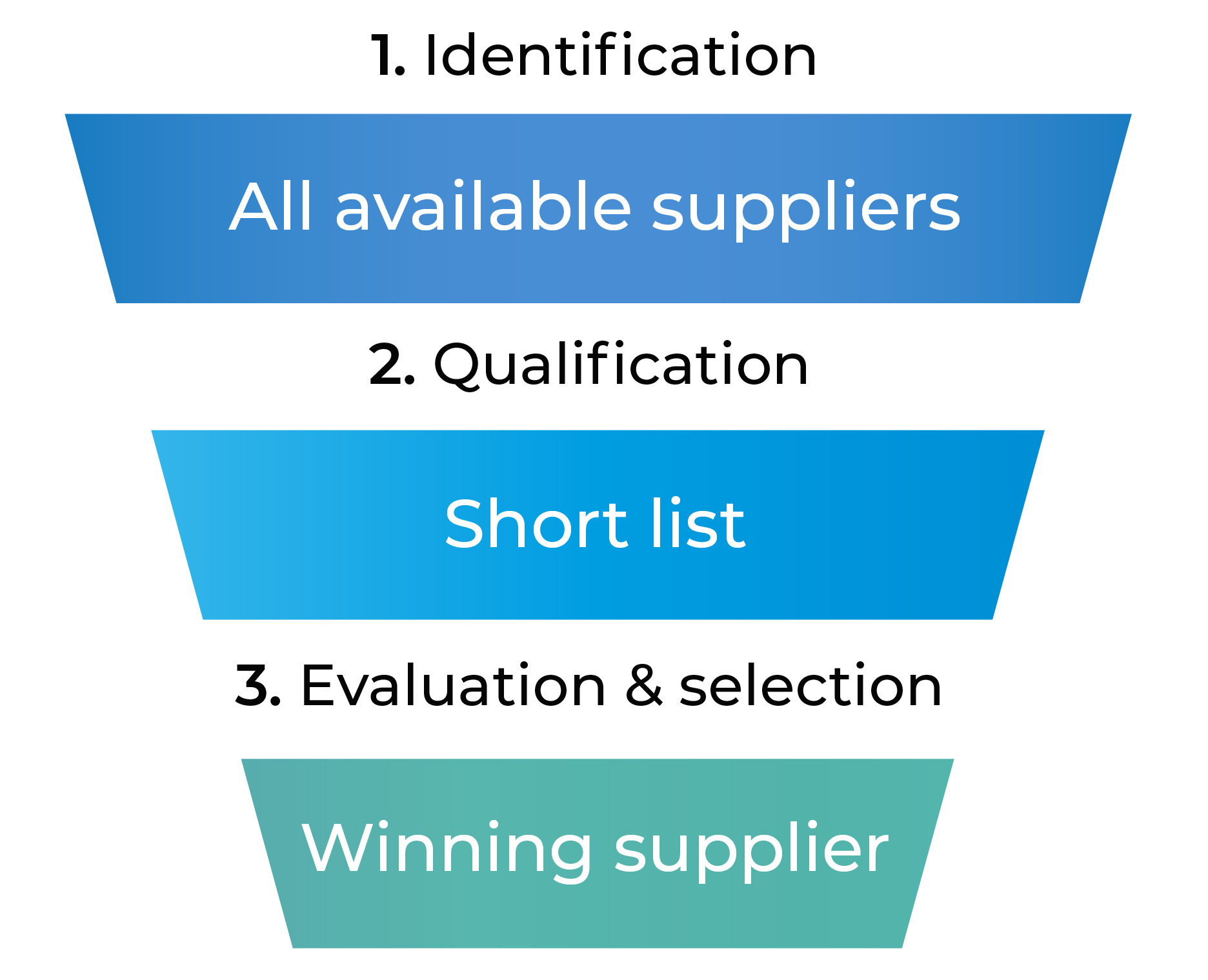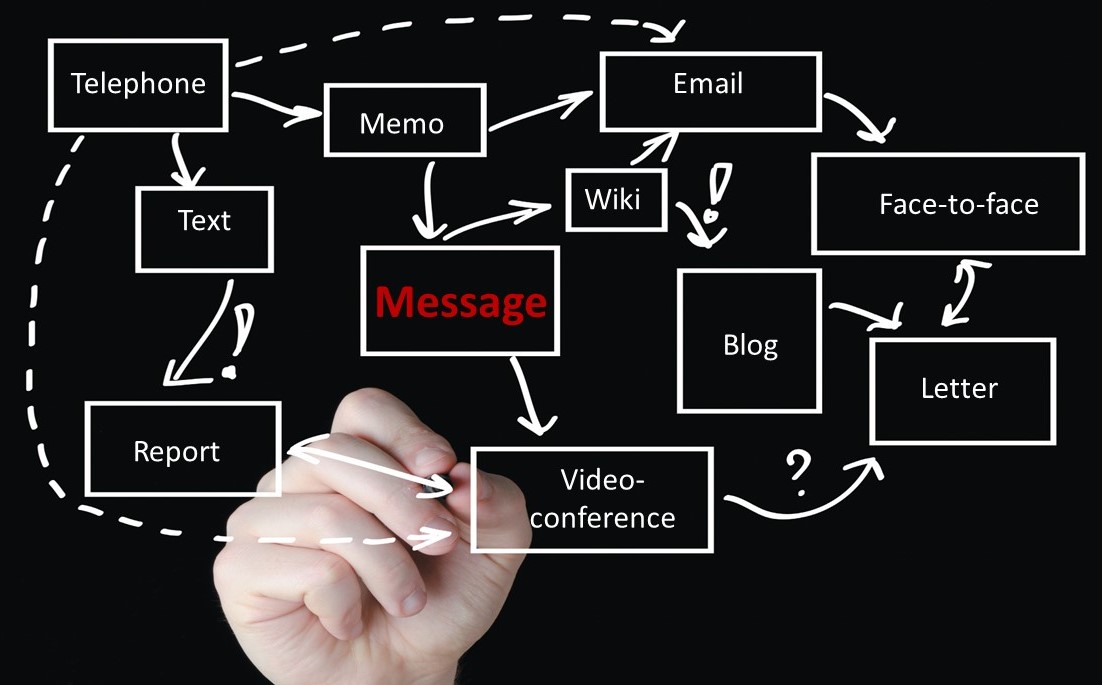How to contact vendors

Introduction
In the rapidly evolving realm of global commerce, few markets have exhibited as remarkable growth and potential as the Chinese market. As businesses strive to tap into this expansive opportunity, it becomes essential to grasp the intricate dynamics that govern effective communication with Chinese vendors. This article serves as a comprehensive guide, elucidating the nuances of establishing successful vendor relationships within the Chinese business context.
Setting the Scene: The Thriving Chinese Market
China's swift economic advancement and manufacturing prowess have firmly established it as a prominent player in the global market. As international businesses search for cost-effective yet quality-driven solutions, Chinese vendors offer an array of options across diverse industries. This article will delve into the strategies and tactics necessary to harness this potential effectively.
The Role of Chinese Vendors: Sourcing, Manufacturing, and Beyond
Chinese vendors hold a pivotal position within the global supply chain. From sourcing raw materials to delivering finished products, they provide a range of services that cater to the varied needs of businesses worldwide. This article will illuminate the multifaceted responsibilities of Chinese vendors and guide readers through the intricacies of engaging with them.
The Significance of Efficient Communication
At the core of successful vendor relationships lies efficient communication. In a world where digital connectivity blurs geographical boundaries, cultivating effective communication channels becomes paramount. This article will underscore the importance of streamlined communication and its profound impact on overall business success.

Understanding Chinese Business Culture
The Significance of Cultural Awareness
To navigate the Chinese business landscape effectively, a profound grasp of its cultural foundations is essential. Respect for customs, traditions, and etiquette significantly shapes the course of business transactions. This article will emphasize the role of cultural awareness in establishing trust and credibility in the Chinese business environment.
Building Relationships: Guanxi in Chinese Business
In Chinese culture, the concept of "Guanxi," which translates to "relationships," plays a fundamental role. In the business context, it signifies the cultivation of strong connections and networks. This article will explore the importance of guanxi in vendor relationships, shedding light on how fostering these connections can lead to fruitful collaborations.
Researching Potential Vendors
Defining Your Needs and Requirements
Effective vendor communication begins with a clear understanding of your business's needs and requirements. Defining these parameters not only aids in selecting vendors but also streamlines subsequent conversations. This article will delve into aligning your business needs with potential vendors.
Utilizing Online B2B Platforms: Alibaba, Global Sources, and More
In the digital age, vendor sourcing has evolved through online B2B platforms. Platforms like Alibaba, Global Sources, and similar options provide a wide array of choices, accompanied by reviews and ratings. This article will guide readers through leveraging these platforms to identify suitable vendors.
Evaluating Vendor Credibility: Reviews, Ratings, and Certifications
In the virtual realm, assessing vendor credibility is a crucial step. Reviews, ratings, and certifications serve as indicators of trustworthiness. This article will explore the process of evaluating these indicators to make informed decisions when shortlisting potential vendors.

Choosing the Right Communication Channels
Email Communication: Crafting an Effective Initial Inquiry
Email remains a fundamental aspect of cross-border communication. Creating a powerful initial inquiry requires finesse, brevity, and a compelling narrative. This article will explore the skill of composing inquiry emails that capture attention and set the tone for further discussions.
Direct Messaging: WeChat, WhatsApp, and Other Instant Messaging Apps
The widespread use of instant messaging apps like WeChat and WhatsApp has transformed real-time communication. These platforms offer a more personal touch, enabling quick exchanges. Direct messaging can lead to establishing immediate rapport with potential vendors.
Video Calls: Using Platforms like Zoom or Skype for Real-time Conversations
In an increasingly digital world, video calls bridge geographical divides and facilitate face-to-face interactions. Zoom, Skype, and similar platforms support real-time discussions, reducing the risk of misunderstandings that can arise from text-based communication.

Crafting Your Initial Outreach
The Skill of the Inquiry Email: What to Do and What to Avoid
When you want to connect with possible partners, clients, or people to collaborate with, the first impression is really important. Being good at writing inquiry emails means being skilled at using the right words and structure.
Creating a Subject Line that Grabs Attention
The subject line of your email is like the door to your message. It's the first thing someone sees and it decides if they open your email or ignore it. Making a subject line that catches their eye is a kind of art.
A good subject line is short but gives useful information. It should make the reader curious and show what your email is about. Think of it like the cover of a book – it should make the reader want to know more. Use important words that matter to the person you're emailing. Avoid using general or unclear phrases that might look like spam. Think of it as writing a headline for a news story, where every word counts.
For example, instead of saying "Inquiry," you could say "Exciting Opportunity to Work Together." Or instead of "Request for Information," you could say "Exploring How We Can Work Together." These examples tell the reader what your email is about and why it's valuable to them.
Personalizing Your Message: Making It About Them and Being Professional
Now that you've caught their attention with a good subject line, it's time to focus on what you say in the email. Personalization is the key to making a real connection with the person you're writing to.
Start by using the person's name if you can. This simple thing makes your email feel more personal and shows that you've done your homework to understand them. Avoid using a generic greeting like "To Whom It May Concern" or "Dear Sir/Madam." Those can make it seem like you didn't put in much effort or interest, and that's not the impression you want to give.
Also, make sure your message is about what they care about and need. Show that you've done some research by mentioning things about their business, products, or services that relate to your email. This proves that your email isn't just a generic message sent to lots of people, but a thoughtful and relevant message.
Keep your email professional. Use clear and respectful language, avoid being too casual, and check for mistakes in spelling or grammar. Being professional shows that you're skilled and reliable, which are important qualities for building trust in any business relationship.
In short, making a good first contact email means being good at writing a subject line that makes the person curious and personalizing your message to show real interest and professionalism. When you do this well, it can make it much more likely that you'll get a positive response and start a successful business conversation.

Language Considerations
Choosing the Right Language for Communication
The language you choose for communication is a big decision, and it's important to think about it carefully. In today's world, English is a global language that's used widely in business, diplomacy, and interactions between people from different language backgrounds. It's the default choice for international communication and provides a common ground for people from diverse linguistic backgrounds. English's widespread use in business, education, and technology makes it the primary language for cross-border interactions. It's certainly helpful for communicating with Chinese business partners who speak English, but there's more to consider.
The Significance of Mandarin in Chinese Business
In the vast world of Chinese business, Mandarin is incredibly important. China has a rich cultural heritage, and language plays a vital role in preserving and expressing that culture. When you communicate with Chinese partners in Mandarin, it shows respect for their culture and a commitment to building a genuine relationship.
Mandarin is also crucial for understanding the intricacies of business customs, negotiations, and the nuances of the local market. Knowing Mandarin allows you to grasp subtle details in communication, which can be essential for making informed decisions in a Chinese business context.
Using Professional Translators for Accurate Communication
For those who aren't proficient in Mandarin, using professional translators becomes essential. These language experts bridge the gap between language and culture, ensuring that your message is accurately conveyed in a culturally sensitive way.
Professional translators not only know the language but also understand the business customs and etiquette of the region. They can help you avoid potential pitfalls, such as unintentionally offending due to cultural misunderstandings. This level of precision is crucial when you're involved in high-stakes negotiations, signing contracts, or engaging in any business activities where miscommunication can have significant consequences.
In conclusion, the choice between English and Mandarin for communication depends on the specific context and your goals. While English is a convenient language for many international interactions, understanding the significance of Mandarin in Chinese business and using professional translators can improve your ability to build meaningful relationships and conduct successful business in this diverse and vibrant market. It's not just about the language; it's about showing cultural respect and ensuring effective communication.

Negotiation and Pricing Discussions
Requesting Quotations: How to Structure Your Inquiry
Effective negotiation is the cornerstone of successful business transactions, and it all starts with crafting a well-structured inquiry for quotations. This initial step sets the tone for your interactions with vendors and can significantly impact the outcome of your negotiations. To ensure a smooth and productive process, consider the following principles when structuring your inquiry:
- Clarity and Specificity: Precision is key. Specify your requirements, including product or service details, quantities, delivery timelines, and any other essential parameters. Ambiguity can lead to misunderstandings and delays in the quoting process. The more specific and detailed your request, the easier it is for vendors to provide accurate quotations.
- Transparency: Honesty and openness are essential. Be transparent about your budget constraints, quality expectations, and any other relevant factors that might influence your decision-making process. This helps vendors tailor their quotations to align with your needs and constraints.
- Deadline: Set a reasonable deadline for vendors to submit their quotations. This ensures that you receive timely responses and can move forward with your procurement process without unnecessary delays.
- Communication Channels: Specify how vendors should submit their quotations. Whether it's through email, an online portal, or a physical document, provide a straightforward method for vendors to follow.
- Contact Information: Include your contact information, so vendors can reach out if they have questions or need clarification. Open lines of communication are essential for resolving any potential issues quickly.
- Terms and Conditions: If you have specific terms and conditions that vendors should be aware of, include them in your inquiry. This can include payment terms, warranties, or any other contractual obligations.
Handling Price Negotiations: Bargaining Strategies and Etiquette
Price negotiations are a crucial phase in vendor communication. They can be delicate, but they are also an opportunity to find common ground and create mutually beneficial agreements. Here are some strategies and etiquette guidelines to navigate price negotiations effectively:
- Research and Benchmarking: Before entering negotiations, thoroughly research the market and gather information about standard pricing for the products or services you're seeking. This knowledge will empower you to negotiate from an informed position.
- Build Relationships: Approach negotiations as a collaborative effort rather than a confrontation. Building a positive relationship with your vendor can lead to more flexible pricing and long-term benefits.
- Stay Flexible: While it's important to have a budget in mind, be open to compromises. Sometimes, other factors like quality, reliability, or additional services can outweigh a slightly higher price.
- Negotiation Etiquette: Maintain professionalism throughout the negotiation process. Avoid making aggressive or unreasonable demands, and always listen to the vendor's perspective. Keep the lines of communication open and be willing to give and take.
- Document Agreements: Once you reach an agreement, make sure it's documented in writing, including all terms and conditions. This helps prevent misunderstandings and ensures both parties are on the same page.

Clarifying Product Details
Comprehensive Product Information: Specifications, Customizations, and More
In any collaborative effort involving products, having a crystal-clear understanding of product details is paramount. This knowledge not only facilitates smooth communication but also prevents misunderstandings down the road. Here's why it's crucial to seek comprehensive product information:
- Specifications: Ensure you have a detailed specification sheet that outlines every aspect of the product. This includes dimensions, materials, technical specifications, and any other relevant data. Precise specifications serve as the foundation for expectations and quality standards.
- Customizations: If you require any product customizations, clearly communicate your specific needs. Whether it's a particular color, packaging, or feature, articulating your customization requirements ensures that the final product aligns with your vision.
- Compliance and Certification: Depending on your industry or region, certain compliance standards or certifications may be mandatory. Confirm that the product meets these requirements, and request documentation as evidence.
Requesting Samples: Ensuring Product Quality Before Commitment
Before committing to a vendor or supplier, requesting product samples is a prudent quality assurance step. Examining and evaluating these samples firsthand offers several advantages:
- Product Validation: Sampling allows you to verify that the product matches the specifications and quality standards you expect. It's a tangible way to ensure that what you're ordering aligns with your needs.
- Assessing Workmanship: Samples provide insight into the vendor's commitment to excellence. Attention to detail, craftsmanship, and overall product quality can be assessed through physical samples.
- Compatibility: If your product has specific applications or needs to work with other components, testing samples helps ensure compatibility and functionality in your intended use.
Addressing Concerns and Questions
Inquiring About Production Timelines: Ensuring Timely Delivery
Knowing production timelines is vital for effective planning and inventory management. This information enables you to:
- Plan Ahead: Understanding how long it takes for products to be manufactured allows you to plan your inventory and operations accordingly. This minimizes the risk of stockouts or delays in fulfilling customer orders.
- Set Realistic Expectations: Communicate your expectations to customers or clients regarding delivery times. This transparency fosters trust and avoids dissatisfaction due to unexpected delays.
- Asking About Quality Control Measures
- Consistency in product quality is an essential pillar of a successful partnership. To ensure that quality remains a top priority throughout the collaboration:
- Inquire About Quality Assurance Processes: Learn about the vendor's quality control measures, such as inspections, tests, and certifications. Understanding how they maintain product quality can instill confidence in your partnership.
- Escalation Protocols: Discuss what happens in the event of quality issues. Having clear procedures for addressing and rectifying quality concerns is crucial for problem resolution.
Addressing Intellectual Property and Copyright Concerns
Intellectual property and copyright protection are universal concerns. Safeguarding your creations or proprietary information is of utmost importance. Here are some steps to consider:
- Define Ownership: Clearly establish who owns the intellectual property rights to any designs, content, or innovations created during the collaboration. This should be documented in contracts or agreements.
- Confidentiality Agreements: Require vendors to sign confidentiality agreements to protect sensitive information. This legally binds them to keep your intellectual property confidential.
- Legal Counsel: Consult with legal experts specializing in intellectual property and copyright to ensure that your rights are adequately protected and that any necessary legal measures are in place.

Building Trust and Long-Term Relationships
The Importance of Face-to-Face Meetings: Visiting Trade Shows and Factories
While technology has made remote communication more accessible than ever, the power of face-to-face interactions remains unparalleled. Trade shows and factory visits serve as essential opportunities to strengthen relationships and gain valuable insights into a vendor's operations and ethos. Here's why these in-person engagements are crucial:
- Building Trust: Meeting in person allows you to establish a personal connection with your vendors. Trust is often built on more than just words; it's about the handshake, the eye contact, and the genuine rapport that can only be formed through physical presence.
- Understanding Operations: Factory visits provide an up-close look at production processes, quality control measures, and the overall working environment. This firsthand knowledge can help you make informed decisions and assess a vendor's capabilities effectively.
- Showcasing Commitment: Your willingness to invest time and effort in visiting vendors demonstrates your commitment to the partnership. This can motivate vendors to reciprocate with their best efforts and resources.
Establishing a Trial Order: Testing the Waters Before Large-Scale Commitment
Before committing to a large-scale partnership, consider initiating a trial order. This approach offers a low-risk way to assess a vendor's capabilities, reliability, and compatibility with your business objectives. It allows you to:
- Gauge Performance: A trial order lets you evaluate a vendor's ability to meet your specifications, quality standards, and delivery deadlines on a smaller scale.
- Build Confidence: As you witness a vendor's performance firsthand, your confidence in their capabilities can grow, making it easier to move forward with larger orders.
Securing the Deal
Reviewing the Contract: Understanding Terms and Agreements
Before finalizing any deal, conduct a thorough review of the contract. Ensure that all terms and agreements are clearly defined, including:
- Pricing and Payment Terms: Confirm the agreed-upon pricing structure, payment schedule, and any penalties or discounts.
- Delivery and Lead Times: Clearly define delivery expectations, including lead times, shipping methods, and responsibilities for delays.
- Quality Standards: Specify the quality standards and criteria that the products or services must meet.
Payment Methods: Ensuring Security and Reliability
Selecting secure and reliable payment methods is crucial for both parties. Explore options such as letters of credit, escrow services, or other secure payment mechanisms to protect against financial risks and ensure a smooth transaction process.

Maintaining Communication Throughout the Process
Regular Updates: Staying Informed About Production Progress
Continuous communication is the lifeblood of successful collaborations. Stay informed about production progress through regular updates. This allows you to track milestones, anticipate potential delays, and keep stakeholders informed.
Addressing Changes or Issues: Flexibility in Communication
Unforeseen changes or issues may arise during collaboration. Maintaining open and flexible communication channels is essential for promptly addressing and resolving these challenges. Adaptability and a solutions-oriented approach are key to overcoming hurdles.
Handling Challenges and Disputes
Dealing with Delays: Effective Communication to Manage Expectations
Delays can be disruptive, but transparent communication can help manage expectations and mitigate the impact. Notify all relevant parties promptly and work together to find solutions that minimize disruptions to the project timeline.
Quality Control Issues: Diplomatic Problem Resolution
Quality control issues demand a diplomatic and constructive approach to problem resolution. Document any quality concerns, engage in respectful discussions, and collaborate with vendors to rectify the situation while preserving the relationship.

Cultivating Win-Win Partnerships
Expressing Satisfaction: Positive Reinforcement for Successful Collaboration
Acknowledging and expressing satisfaction fosters positive relationships. Celebrate successful milestones and express your appreciation for your vendor's efforts. This positive reinforcement can inspire continued excellence.
Providing Constructive Feedback: Fostering Ongoing Improvement
Constructive feedback is a catalyst for improvement. Share feedback in a constructive and specific manner, focusing on areas where enhancements can be made. Encourage an ongoing commitment to excellence.
Conclusion
As we conclude this comprehensive guide, we reflect on the journey from the first inquiry to a thriving vendor partnership. Navigating the intricate landscape of Chinese vendor communication demands cultural sensitivity, effective language use, and a commitment to building lasting collaborations.
Empowering Your Business Through Global Vendor Relationships
In an increasingly interconnected world, global vendor relationships empower businesses to access the vast potential of markets like China. This guide equips readers with the tools, strategies, and insights needed to navigate this complex terrain successfully, forging partnerships that drive business growth and innovation on a global scale. Remember, successful partnerships are built on trust, effective communication, and a shared commitment to mutual success.

